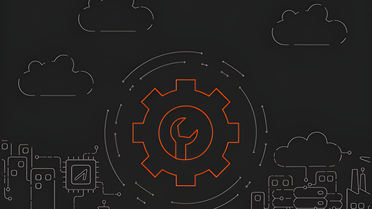In recent years, the development of the human lifestyle has been conducted by rapid changes in technology and growing demand for digitized devices and services. That pace of change could be accelerated by new scientific discoveries, advances in technological tools (independent to the growth of knowledge, as we have limitations related to construction capacity), and the greater interest of the population in new fields such as artificial intelligence, Internet-of-Things (IoT), robotics, biotechnology, and nanotechnology. We have experienced these changes mainly since 2000 with the incorporation of communication technologies in health, engineering, economics, and transportation. Nowadays, it is almost impossible to consider it decoupled from our daily activities, whose main objective is to help us make decisions, simplify the administrative and technical processes, and improve the quality of the product or services.
An excellent example of that constant change is the cellphone. Its beginnings allowed only voice calls, including sending and receiving text messages. The technological development has brought new communication devices that enable additional tasks such as video calls, transferring and storing data and processing it in real-time (e.g., facial recognition). Obviously, not everything fits well; running intensive tasks demands high computing resources and higher energy consumption. For the last one, the lifetime of the batteries falls well below the consumer expectation, and its durability remains an obstacle until new developments are made. One way to reduce these impacts is by optimizing the applications or the device’s internal architecture. Now suppose we extrapolate these considerations or changes to the business and industrial sector, it will be equivalent to the digital transformation of old-fashioned companies.
Although companies have begun to adopt the idea of constant updating, many of them have not yet undergone some kind of digital transformation. During an interview, John Chambers, Executive Chairman of Cisco Systems at the BoxWorks 2015 conference, stated that “At least 40% of all businesses will die in the next 10 years… if they don’t figure out how to change their entire company to accommodate new technologies.” All mentioned previously shows us the importance of incorporating new technologies and keeping the companies up-to-date. For this reason, we continue a series of posts to point out the main technological trends and how edge computing relates to all this. We will discuss the edge computing fundamentals and its main features, the industrial sectors that can be beneficiated, how you can push computation to the edge with a serverless model, strategies of modernization, business and technical considerations, and other more features. Also, we will show you how serverless providers like Azion have the capability to deliver a platform designed to maximize performance, reliability, and security. But first, let’s start with a brief explanation of edge computing for digital transformation.
Digital Transformation
Digital transformation is primarily driven by technology; it also considers changes in the culture, organization, and operations of a company with the aim of integrating digital tools, processes, and human capital in a strategic way. The main objective is to optimize internal processes, increase productivity, improve competitiveness and add value to the final products. Therefore, the digital transformation is not only about acquiring new computers with more significant computational and storage resources, but this also implies a change in the mentality of the processes carried out at all hierarchical levels of the company and how these are managed. It is an investment for the constant development of new working methods that facilitate and improve the capabilities of the company and the skills of its staff. In this way, companies become more profitable due to offering a greater volume of personalized services, maintaining or improving product quality while providing a new customer experience.
According to a post published in Consultport, some digital transformation trends are:
- Contactless Payment: This is a digital technology prevalent in many countries and became relevant with the pandemic for getting payments hygienic, through cards and smartphones.
- In-Store Pick Up: This is a business model where the product’s purchase is made online and is collected as soon as the customer arrives at the physical retail outlet. This model became more widely used due to social distancing restrictions.
- Customization: This is a sales strategy in which companies offer customers the possibility of customizing their products through digital technology and thus increase their revenues. According to an article published in Deloitte, it states that “price isn’t the barrier, 1 in 5 consumers who expressed interest in personalized products or services are willing to pay a 20% premium.”
- E-learning and remote working: These are new procedures which universities and schools adopt to give online lessons and maintain the productivity of companies. According to a report published by GlobeNewswire, “the e-learning market is expected to grow by $147.79 bn during 2021-2025 progressing at a CAGR of over 16% during the forecast period.”
Edge Computing and Serverless Approach
As mentioned in the previous section, the digital transformation of companies is related to the integration of new technologies. To accomplish it, you can opt for an infrastructure service that allows this type of integration but avoids making you dependent on a vendor of products and services, known as “vendor lock-in.” That dependency creates barriers that limit markets and opportunities for company growth and makes it difficult to move from one solution to another. In contrast, open infrastructures make your company tolerant of changes so that decisions can be postponed until more information is available. It must have the capacity to offer scalability, security, data localization, mobility, low latency services, among others. All these characteristics are brought together only in edge computing, unlike cloud and CDNs models. As mentioned in our previous post, edge computing is defined by the Linux Foundation in its Open Glossary of Edge Computing as “The delivery of computing capabilities to the logical extremes of a network in order to improve the performance, operating cost, and reliability of applications and services.” In other words, edge computing allows you to run a software or application on the edge network rather than a centralized infrastructure, such as in a data center or the cloud.
Once edge computing takes the serverless model, the provider manages the infrastructure’s back-end. It means that you don’t have to worry about: hardware maintenance, high availability, software architecture, data transformation, database administration, automatic management of scalability, and computing resources. For example, this approach offers the benefits of intelligent storage and content delivery. You can set rules to handle them according to your business plan.
Edge Computing Scope
Industries are an example of how you can benefit from edge computing. A summary of the current situation of industries and the challenges to solve their problems are presented below:
- Manufacturing processes: Many manufacturing plants are not prepared to keep up with the current technological development, which requires high data transmission due to the high number of interconnected devices to operate logically and make crucial decisions in real-time.
- Retail: One of the markets that has grown exponentially in recent years. For example, companies will require a suitable content delivery service, with high speed, in different formats, and the capability to deliver data to any geographical location to buy and sell products in a personalized way.
- Oil and gas: Offshore companies present critical conditions in terms of distance and with difficult access. They require data storage and computational processing services closer to the production area.
- Health: A particular case are hospitals that require intelligent management of a vast database and interconnectivity between the different health monitoring devices in real-time.
- Education and research: Continuous search for innovation of new technologies and research methods must be performed, analyzed and tested daily. These studies are mainly characterized by requiring high computational power, data storage, and low latency.
- Financial sector: A sector with a growing number of users. Banks must protect the sensitive data of all accounts and facilitate internal management and communication between the different agencies.
Other cases where edge computing becomes relevant by moving closer to the user’s environment are:
- Video games: They take advantage of technologies such as edge computing and its edge Network to deploy virtual consoles and offer latencies lower than the 170 to 180 millisecond range. According to a report of Globaldata, “mobile gaming will become a $272bn industry by 2030.”
- AR / VR experience: They must have a swift response time. Virtual reality (VR) and augmented reality (AR) require a latency of fewer than 20 milliseconds to prevent the user from experiencing undesirable effects.
- Media / CDN: Companies must consider the content delivery to all users by caching data (video, music, images) according to the region and the clients’ wishes. Edge computing platform makes it by an intelligent management according to your business plan.
- Internet-of-Things: The growing number of sensors located in devices such as cleaning, personal health control, the record of temperature, pressure, speed, radiation and others in sensitive environments, and the novel use as security of large cities generate terabytes of data. Therefore, companies will require rapid and trustworthy processing data.
- 5G technology: Applications must run anywhere, with low latency and with consistent performance. They must be cost-effective to run and scale, considering the amount of data to be processed and transmitted.
Why is Edge Computing Important?
Edge computing is a computing paradigm born in response to the problems presented in cloud computing. It allowed the union of technological advances such as microservices, event-driven programming, isolation, and mainly the pure idea of the pay-per-use model. It is also a self-managed computing model where the provider offers hardware services and manages them by adapting computing resources according to the apps’ needs. In addition, it provides to business and industrial sectors the opportunity to maximize operational efficiency and data security, automate processes and optimize performance. To explain in detail the question of why edge computing is important, a scientific article by Aslanpour points out possibilities that it offers, where some of them are discussed below:
Pay-per-use
Applications commonly have essential and unpredictable workloads. With traditional computing models, such as the cloud, you must contract oversized provisioning of containers with computational power and static storage services. Due to this configuration, you pay for the hired services, which generates additional charges for inefficient use. In addition, this model still does not prevent that in some situations when the workflow experiences large spikes, which could cause a system interruption. On the other hand, if computational resources are managed using the serverless model, you will avoid overprovisioning. Scalability becomes automatic, and the operating costs will be based on the computational resources requested by the applications, thus avoiding additional charges and only paying-per-use.
Always-on mitigation
As mentioned in previous sections, different areas of the industrial sector can take advantage of the benefits of edge computing. In most of these areas, their use is related to devices permanently connected to the network and ready to respond to any request, even when the probability of an event is zero. This can be a drawback in terms of energy consumption. Although some devices can benefit from renewable energy sources, it does not prevent the reduction of their lifetime. Edge computing and serverless allows you to mitigate these problems by considering an event-based programming paradigm. Events determine the workflow. In this way, energy can only be provisioned by external actions, such as a click, keypress, sensor outputs, message passing, or threats; then reducing energy consumption and increasing the devices’ lifetime.
Developer productivity
Edge computing is ideal for companies that need to develop and monitor code at all stages rapidly. It makes the code building easy and eliminates integration, testing, deployment, and monitoring dependencies (DevOps). It positively affects your technical team since it allows you to focus on more relevant aspects of the company once the infrastructure is self-managed.
Customized availability
Companies use information technology in distributed sites to carry out some or all of their business operations. Identifying in real-time which areas have the most significant relevance is essential to direct a greater availability of computational resources and with permanent supervision. This feature is intrinsic to edge computing. For example, you can have your information stored in different edge nodes and distributed in strategic points around the world and have storage redundancy when an edge node is unavailable due to unexpected damage.
Legacy modernization
Software modernization refers to converting, rewriting, or adapting a legacy system. It allows you to modernize the programming languages, protocols, software libraries, or even migrate an entire software to a new platform. With edge computing and serverless, you can accomplish all of this and even have the option to decouple a monolithic application into different modules or microservices controlled by APIs. These transformations are commonly performed to maintain the initial version of the software and take advantage of existing technologies.
Conclusion
The edge computing model is available for different business and industry sectors. It offers continuous technological improvements under the idea of microservices, event-driven programming, isolation, the pay-per-use model, and others. You are not restricted by vendor lock-in. Then you can migrate to another platform or make use of third-party services. With Azion’s Edge Platform, you can leverage a wide range of these and other benefits without worrying about infrastructure maintenance and management. To learn more about Azion products and their benefits, continue our series of posts on edge computing fundamentals in our blog.
References
[1] The LF Edge (2020) The New Open ”Edge”. San Francisco, CA: The Linux Foundation.
[2] Aslanpour, M. S., Toosi, A. N., Cicconetti, C., Javadi, B., Sbarski, P., Taibi, D., … & Dustdar, S. (2021, February). Serverless edge computing: vision and challenges. In 2021 Australasian Computer Science Week Multiconference (pp. 1-10).







